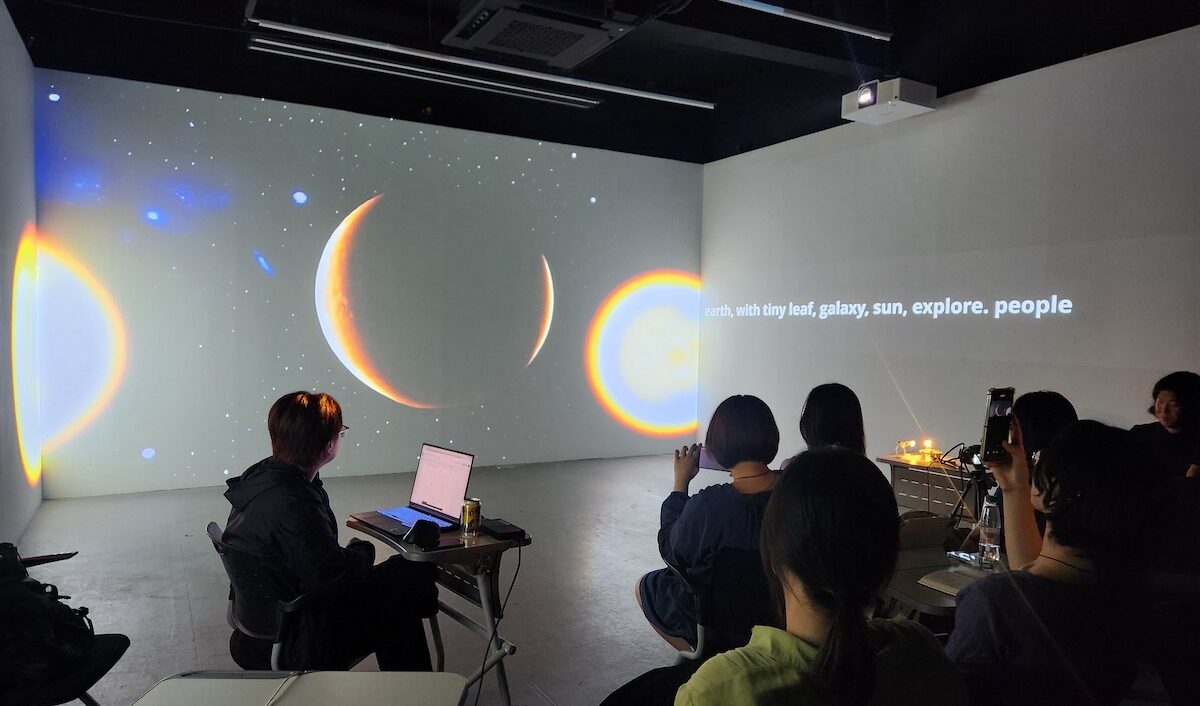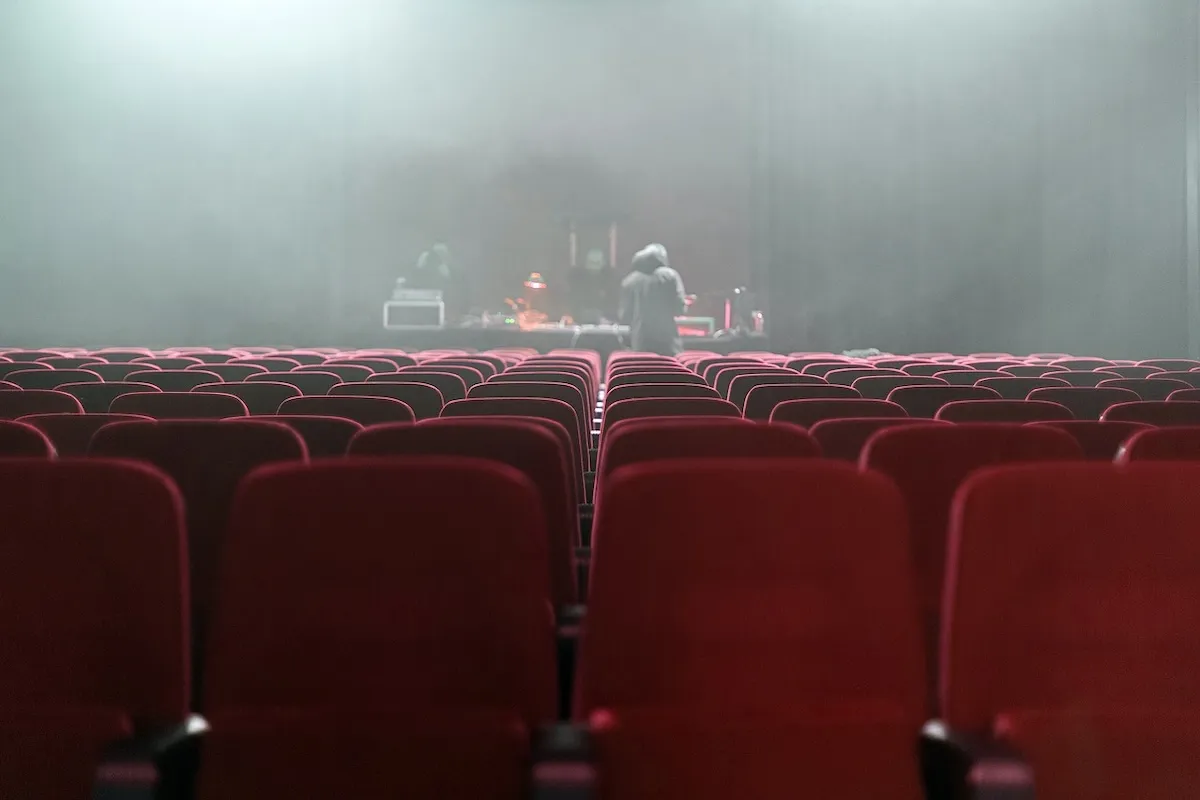| [People]introduces the future direction of art education that the Art Collider Lab (hereinafter referred to as AC Lab) of the Convergence Arts Center seeks and aims to pursue through people who have worked with AC Lab. |
“In the end, it’s about the direction of education. If students are forced to follow a predetermined path, there’s no room for creativity. Even collaboration starts feeling like a hassle.”
Arrddon speaks with unwavering conviction. His belief in educational innovation has been shaped through years of reflection and hands-on experience in the classroom. While he is an active artist and university lecturer, he prefers to identify himself as a researcher of creative learning—a testament to his deep commitment to rethinking how education works.
Last fall, he hosted Creative Technology Study in K-Arts(Korea National University of Arts)’ AC-CAVE, a program that embodied his educational philosophy in a tangible way. Though framed as a study group for artists exploring technological growth and collaboration, the program stood out for its unconventional approach. There were no assigned topics, no standard answers, and no designated instructors—just a space for exploration. So, what did students gain from this radical learning experience?
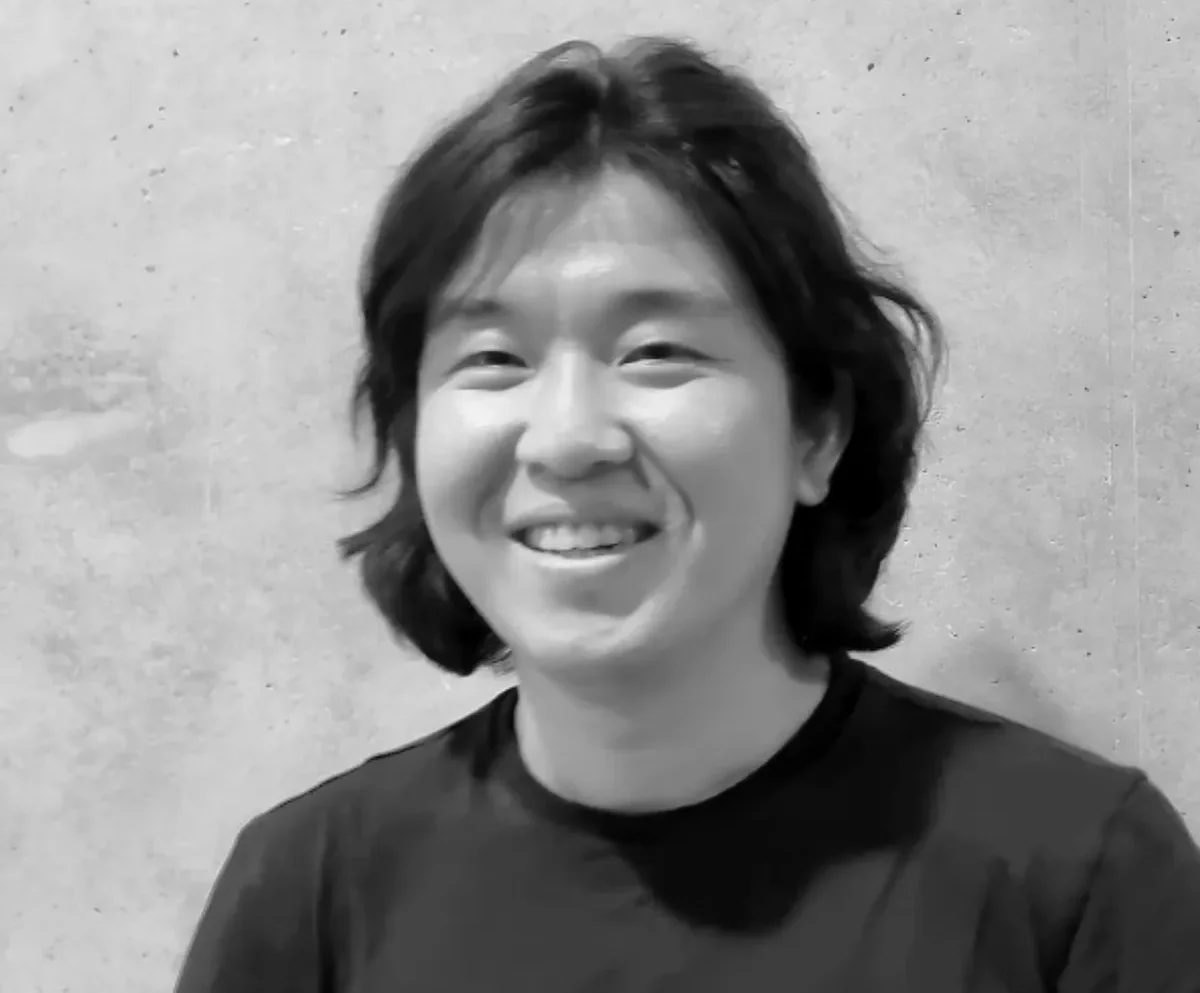
Arrddon, Researcher of Creative Learning and Media Artist
| Technologist, Artist, and Educational Innovator
As a media artist, Arrddon’s main focus is people. Despite his extensive expertise in new media technologies, the core material of his work has always been society and community. His shift from studying mechanical engineering to pursuing a career in the arts stemmed from his curiosity about people rather than machines.
“While studying arts management at K-Arts, I participated in various projects. But the more I worked on planning and programming, the more I became preoccupied with the question: ‘How will the audience receive this?’ That’s where my artistic journey both begins and ends. That’s also why I gravitate toward interactive media, which is completed through communication.”
His belief in dialogue and reception is reflected in his approach to education. He constantly considers what would make learning more meaningful for students and isn’t afraid to break conventions to find answers. This is why he calls himself a researcher of creative learning.
The most valuable research material? His own educational experiences. Having gone through primary, secondary, and university education—including both undergraduate and graduate studies at K-Arts—he has encountered countless courses that exposed the limitations and challenges of traditional education. Over time, his lived experiences became a vast reference library, shaping his philosophy on learning.
“The more I studied, the more I felt, ‘This isn’t right.’ When I got to K-Arts, I completely changed my approach. I designed my learning experience to be entirely self-directed. I participated in everything I could. I even ‘taste-tested’ almost every class across different majors,” he laughs. “Looking back, I think that was my way of fine-tuning my perspective on how education should be structured.”
Now in his fourth year as an educator, Arrddon teaches in the Multimedia, Stage Design, and Design departments at K-Arts. Last year, he took a significant step in putting his educational philosophy into practice. Through a workshop-style class, he demonstrated that students could grow without being spoon-fed knowledge or pressured into achieving results. This experiment took the form of Creative Technology Study, a project in collaboration with K-Arts’ Art Collider Lab.
“This was an attempt to combine the concept of a learning community with arts education,” he explains. “Both the students and I, as the facilitator, experienced real growth through the process.”
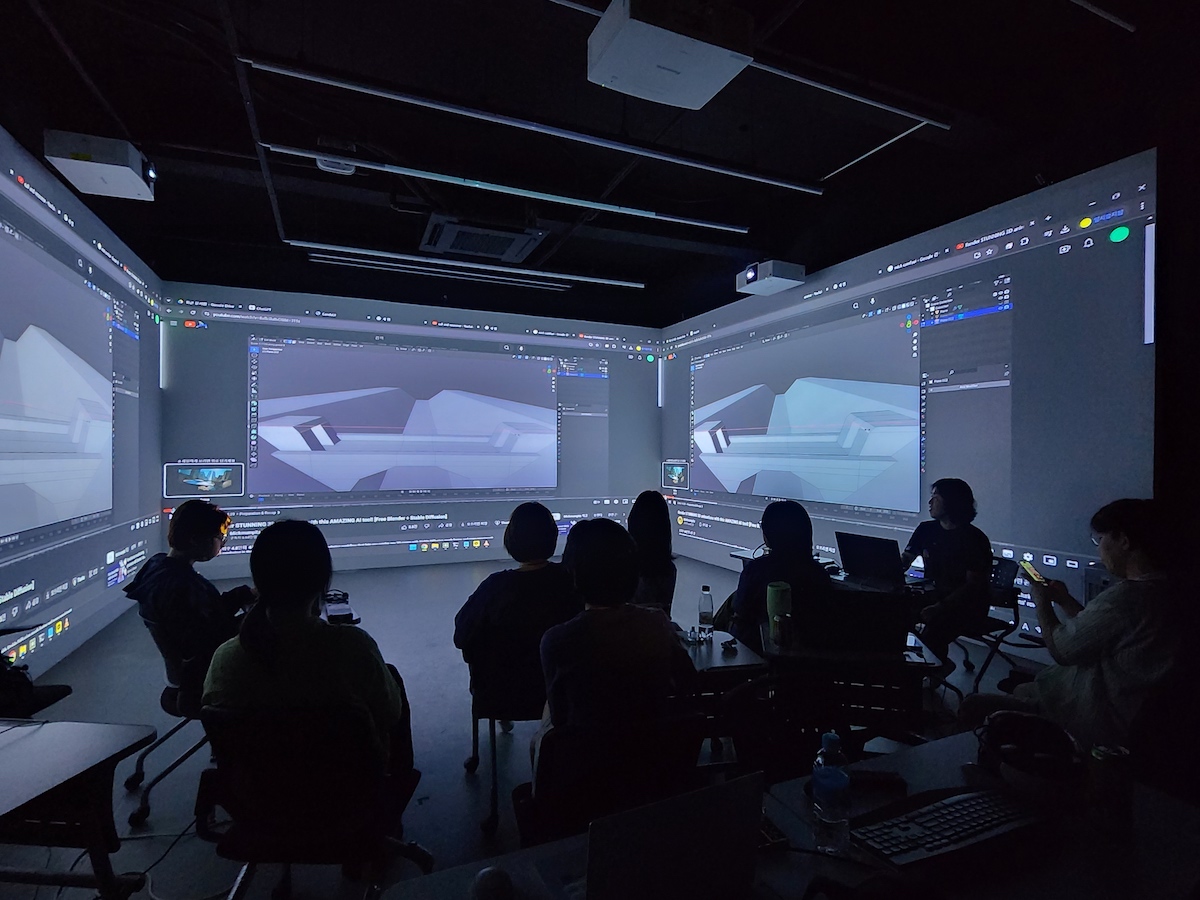
Arrddon (right) who is conducting the workshop
| “If You Want to Speak English Fluently, You Need to Live in the US—Not Just Attend an English Class.”
Creative Technology Study was a non-curricular workshop at K-Arts designed to help creators from various fields grow technologically and build networks. The structure was simple: monthly offline meetings, culminating in a final session where participants shared their progress.
The focus was on technology. Today, technological advancement is nearly synonymous with artistic expansion, making it increasingly essential for artists to understand and integrate digital tools, AI, and new media. However, educational institutions often lag behind in this area. Arrddon points out, “Despite the growing importance of technology in artistic expression, related courses remain insufficient in both quantity and quality. Through trial workshops, I saw firsthand the need for a community where creators could engage with technology more freely.”
Given this background, one might expect the workshop to have been heavily instructor-led. Arrddon, after all, has a technical background in engineering, has spent over a decade mastering media art technologies, and actively uses interactive media in his work. However, the actual workshop environment was the complete opposite.
Arrddon did not teach or evaluate. He did not assign projects or require formal presentations. At most, participants would casually share their computer screens with each other. Students choose their own topics and explored technologies relevant to their interests. It functioned more like a study group, making this one of the workshop’s defining features.
“When we think of studying, we usually picture rote memorization or repetitive practice—things that feel far removed from creativity or artistry,” Arrddon explains. “But in this workshop, the process was closer to acquisition than traditional studying. It’s like living in the US for a long time—you naturally pick up English without needing formal lessons. Similarly, by immersing students in an environment surrounded by tech-savvy peers, they organically developed a technological mindset and honed their skills.”
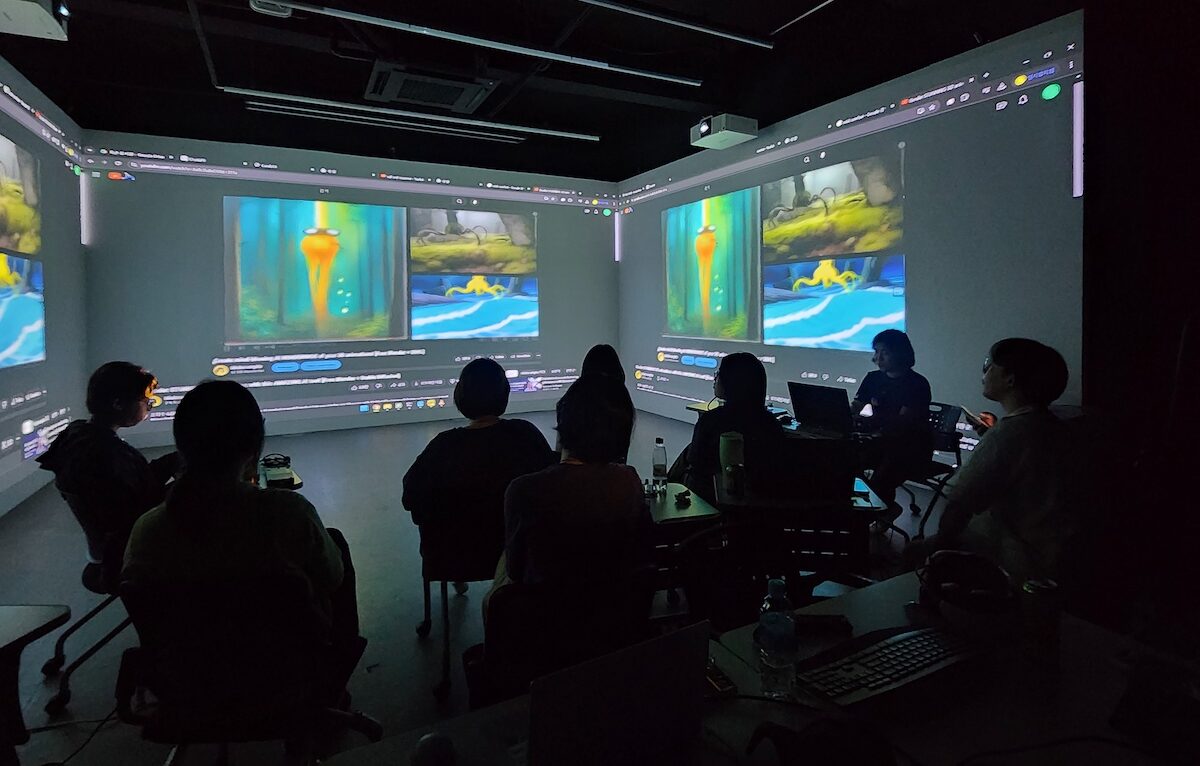
Creative Technology Study Field View
Could such a loosely structured workshop still produce educational outcomes? The answer is clear from the participants. Arrddon states, “Every student, in their own way, achieved something meaningful.” Some created simple games, while others integrated AI into their existing projects. But more importantly, students began to rethink their approach to learning itself.
“At first, some students were visibly confused. They weren’t being handed answers. But as the atmosphere encouraged experimentation, they started trying things out. Of course, they failed along the way, but some succeeded—often in creative ways I hadn’t even imagined. That’s the ideal process and outcome. Once students accumulate experiences like this, they start breaking free from the rigid mindset imposed by standardized education. And that’s how real educational innovation begins.”
| Beyond the ‘Right Answer’: Embracing Possibilities Over Competition
Arrddon’s vision for creative education is rooted in his experience as an artist and educator. However, he stresses that the limitations of arts education are not unique—they reflect broader issues in the education system as a whole.
“We often discuss education reform in terms of breaking free from test-driven learning, rote memorization, relentless competition, and an obsession with results. But arts education suffers from the same problems,” he points out.
“Even as adults, artists still carry the conditioning of their primary and secondary education. They seek the ‘correct answer’ in their artistic work, just as they did in school. Collaboration feels unnatural because, from an efficiency standpoint, it’s simply inconvenient in a competitive system.”
Despite these challenges, Arrddon remains optimistic. He believes the key lies in fostering autonomy rather than efficiency. In his view, arts education should move beyond a rigid, results-driven model and instead celebrate individuality and diversity.
“The conventional approach to arts education assumes that everyone should aim to become world-famous pianists or conductors. But that’s an incredibly narrow framework. We need more educational programs that cater to a wider range of artistic aspirations.”
By shifting the focus from results to process, and from competition to diversity, he hopes to create an educational culture that better reflects the creativity and richness of the arts. He envisions a world where artists don’t just follow prescribed paths but carve out their own unique trajectories.
“When Bruno Mars was a kid, he followed his musician family to performances. He didn’t attend a prestigious music academy or go through grueling training—he simply absorbed how music worked and how it moved people. He learned music by experiencing its function and necessity, not through cutthroat competition or endless drills. And look where he is now—one of the most famous artists in the world. That’s a lesson worth thinking about.”
/ written by TJ
